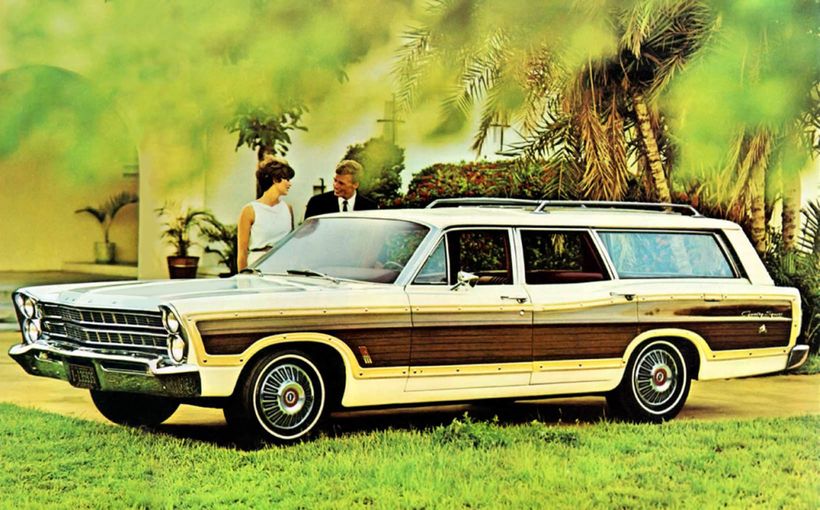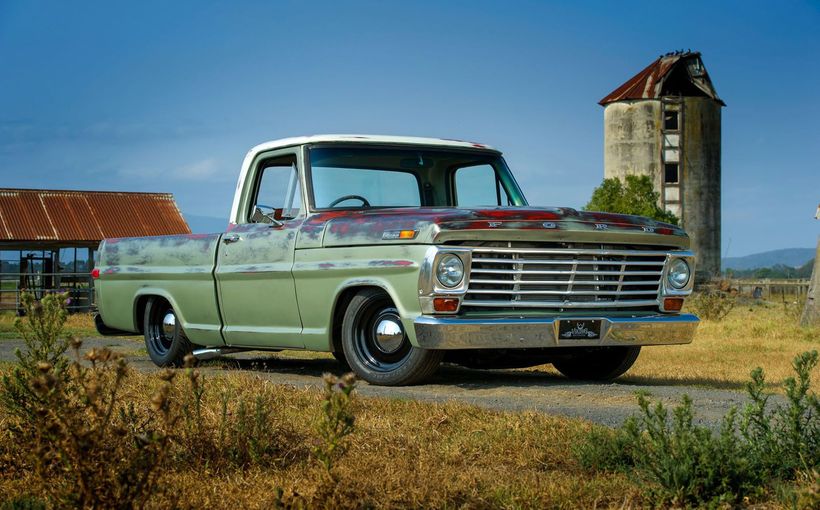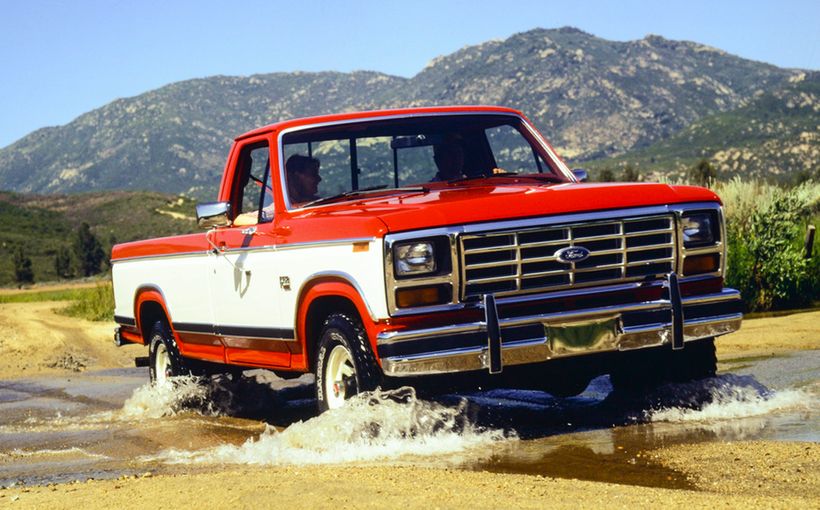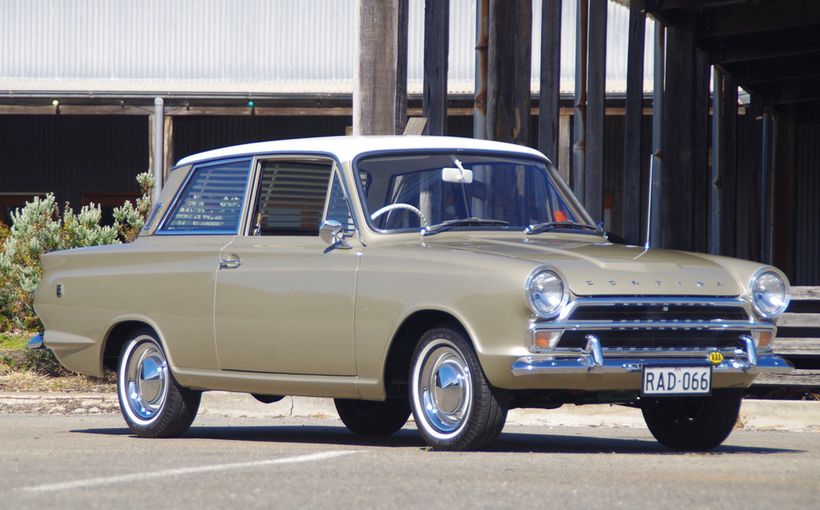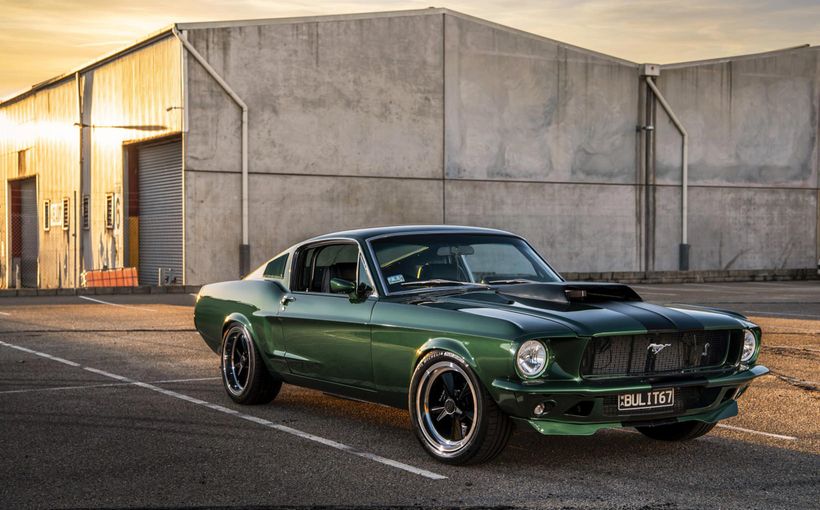XD Falcon: Ford’s accidental racing hero

Ford Australia did not want to race its new XD Falcon in 1980. It wouldn’t even homologate it for privateers to race. So how on earth did the XD even make it onto the track let alone become a hugely successful race car revered as one of the greats of the Group C touring car era?
You could say it happened by accident. Well, two accidents really. One was a critical oversight by the sport’s governing body CAMS in relation to the car’s minimum weight during the XD’s approval process in 1979.
The other occurred at Mount Panorama in 1980, when a Queensland battler by the name of Dick Johnson collided with a large rock that tumbled onto the track and destroyed his home-built XD Falcon while leading the Bathurst 1000.
The immediate outpouring of support from the public and Ford Australia, to get the shattered Queenslander back on track with a new XD the following year, is arguably Bathurst’s most treasured zero-to-hero tale.

Where there’s a will, there’s a way
It was of little surprise when Ford withdrew its factory support of the Allan Moffat Ford Dealers Team at the end of the 1978 season.
After a hugely successful campaign in 1977, highlighted by the first 1-2 formation finish at Bathurst, 1978 had seen a dramatic form reversal with Holden’s LX Torana A9X making life hell for Ford’s heavyweight Falcon Hardtops. There was nothing to gain by continuing.
With the launch of its all-new XD Falcon in March 1979, though, Ford started making all the right noises again about renewing its direct involvement in motor sport in 1980.
This was when the XD was destined to face off against Holden’s all-new VB Commodore, under a fresh set of rules that would do away with the ageing Toranas and Falcon Hardtops of the 1970s and replace them with the ‘new look’ Commodore and Falcon models.
However, Ford started to get cold feet about making its return with the XD as it was concerned Holden was manipulating the proposed rules to ensure its new Commodore would be a runaway winner from the outset.
Given the higher relative kerb weight of the new Falcon, combined with the requirement that Ford and Holden use less powerful small port ‘anti-pollution’ engines (in response to global concerns over air quality and oil reserves) Ford reasoned that the XD was not going to be competitive.
The company’s attitude wasn’t helped by industry rumours Holden was planning to offer the imported 350 cid (5.7 litre) Chevrolet small block V8 as an option in the new Commodore.
Not surprisingly, Ford announced that it would not be returning to motor sport with the XD Falcon and would not even be homologating the car for competition use.

The shockwaves from this decision were felt far and wide, particularly at CAMS’ Melbourne headquarters, because without a new Falcon to take on the new Commodore there would be no ‘new look’ touring car contest!
Despite Ford’s announcement, a few dedicated Blue Oval devotees based in Melbourne and Sydney defied the company’s wishes and managed - by stealth - to get the new XD Falcon homologated and onto the race track in 1980.
The remarkable thing about this crusade was that both parties worked alone on their homologation plans without any communication between them. Even so, it was their combined efforts which resulted in the paperwork needed by CAMS to approve the XD for competition.
The Melbourne-based effort involved Ford racing stalwart Murray Carter, Ford Australia stylist Wayne Draper and automotive fiberglass specialist Bob McWilliam.
Draper, a self-confessed petrol head, had been obsessed with the idea of Ford racing the XD from the early days of its development in the mid-1970s. Draper conceived some wild aerodynamic bodywork for a competition version of the car, which included large Le Mans-style wheel arch extensions, a huge front spoiler, roof spoiler, rear wing, bonnet scoop and vertical aero splitters.

His racing concept was refined by Ford modellers in the wind tunnel using a 3/8th scale model. In paying tribute to the stillborn XA Falcon GT-HO Phase Four of 1972, Draper referred to his XD concept as the ‘Phase Five’ Falcon in a symbolic continuation of Ford’s hottest Falcon breed.
Draper had also been designing the graphics for Murray Carter’s Falcon race cars over the years and it was through their relationship that Carter expressed an interest in racing the new XD in 1980.
When Draper showed Carter photos of his scale model, the veteran racer approached CAMS with the concept for approval, mindful that Draper had to remain anonymous. If word got back to Ford’s head office about what one of its designers was up to, there would have been hell to pay!
CAMS gave Carter a sympathetic hearing and agreed to play ball provided the radical bodywork changes proposed were toned right down (CAMS had already told Holden the same thing when presented with similar radical plans for the Commodore).

The other sticking point was that under FIA rules, a touring car could not be homologated for competition use unless it was endorsed by an automotive manufacturer with its own compliance plate.
Ford HQ was clearly a no-go zone, but Draper found a solution to this hurdle in Bob McWilliam who ran a Melbourne panel shop that specialised in the production of aftermarket fiberglass body kits and other components.
Draper and McWilliam instigated a plan to legally homologate the XD Falcon for racing through joint ownership of a company called ‘Phase Autos Pty Ltd’. However, Draper had to remain a silent partner for obvious reasons.
As a vehicle ‘manufacturer’ with its own compliance plates, Phase Autos would then produce the minimum number of ‘XD Phase Five’ Falcon road cars (25) required to homologate the XD for racing.

These cars were fitted with the CAMS-approved fiberglass wheel arch flares, front spoiler and ‘ducktail’ rear spoiler for the race cars. These components were made available for Ford competitors to purchase through Murray Carter Motors in Melbourne (although the rear spoiler was not approved for use until Bathurst 1980).
Meanwhile, in Sydney - and without the Melbourne crew’s knowledge - a young cash-strapped touring car racer called Garry Willmington had also been hard at work trying to get the new XD homologated, also in clear defiance of Ford’s wishes.
Willmington claims that he even received a letter personally signed by the then head of Ford Australia, Edsel Ford II, stating that Ford did not want to see this car on the race track.
Fortunately, Willmington was not deterred by Ford’s abstinence. He tore down his brother’s brand new XD road car in his workshop, fitted all the high performance drivetrain components from his Group C Falcon Hardtop race car (effectively a ‘bolt-in’ swap-over from one car to the other) and took lots of photos to use in the documents he lodged with CAMS.
What is remarkable about this clandestine approval process is that photos and information that appear in the XD homologation documents were supplied by both Carter and Willmington. How these papers from two unrelated sources were brought together into one cohesive rubber-stamped document is one of many intriguing chapters in the XD racing story.

The devil is in the detail
Despite these behind-the-scenes efforts, the new XD would still have been on a hiding to nothing if not for a critical oversight on behalf of CAMS in approving the new Falcon’s minimum racing weight.
With a kerb weight of just under 1500 kgs (1496 kgs), even the base 351 cid (5.8 litre) V8 manual version of the XD Falcon road car would have been uncompetitive against Holden’s new smaller and much lighter 308 cid (5.0 litre) VB Commodore at just 1232 kgs – a whopping 264 kgs less than the new Falcon.
What instantly turned the XD into a genuine prize fighter was CAMS’ acceptance of the car’s minimum racing weight of 1367 kgs, which as it turned out was based on the lightest model in the XD range – the base model 3.3 litre six cylinder manual with column shift and vinyl trim.
This resulted in a huge 129 kg weight loss, bringing the racing XD to within 135 kgs of the Commodore. And given that its Cleveland V8 engine was almost one litre larger in capacity than the Holden engine, the XD suddenly boasted a very competitive power-to-weight ratio.
In hindsight, how this anomaly was rubber-stamped without anyone at CAMS or Holden noticing is remarkable. And ironic, given that Ford did not want to race the XD in the first place because it feared being politically outmanoeuvred by Holden!
As Phase Autos P/L set about building the minimum number of XD Phase Five road cars required for homologation, Carter and Willmington commenced construction of their XD race cars using the first wheel flare and front spoiler kits provided by Phase Autos.

Dick Johnson: just ‘weight’ and see
Garry Willmington and Murray Carter were the first competitors to blood the new Falcon in the ‘new look’ Australian Touring Car Championship in 1980.
Confusion over the new rules resulted in very thin fields in the early rounds, which were dominated by Peter Brock in the Holden Dealer Team’s new VB Commodore. Ford’s decision to stay out of the sport had prompted Holden to do the same, leaving Brock to fund his racing operation through corporate sponsors and a network of enthusiastic Holden dealers.
Despite Brock’s dominance, the new XDs showed enough potential in those early rounds for rising Queensland touring car star Dick Johnson to put everything on the line and chance his future with the new car.
At the time, Johnson’s racing career was at a standstill, after the Bryan Byrt Ford dealership in Brisbane which had backed him for three seasons in Group C Falcon Hardtops had been forced to withdraw its support at the end of 1979 due to growing commercial pressures.
So Dick and his wife Jill put everything on the line by taking out a second mortgage on their Brisbane home to chase their dream of reaching the top of Australian touring car racing.
Johnson did a deal with Bryan Byrt Ford to purchase all of the running gear from their racing Hardtops and an ex-Highway Patrol 351 cid (5.8 litre) XD Falcon which would serve as the basis of his new Group C touring car.
The Queenslander had twigged straight away to the XD’s massive weight break. He knew that if he could trim close to 130 kgs to get his car down to the 1367 kgs minimum weight, his XD was going to be a rocket-ship.

And even though under the new anti-smog rules the venerable 351 cid Cleveland V8 had to run the small port, lower compression, 2V cylinder heads and manifold, Johnson rightly figured that this would actually improve the engine’s performance in racing with more torque and smoother power delivery than the cavernous 4V hardware used in the Hardtops.
As it turned out, Johnson’s XD was so quick straight out of the box that his rivals (including HDT) thought he had a super powerful engine. The car had super powers all right, but they were all looking in the wrong place. The secret of the car’s success would not be discovered until mid-1981 when it was inadvertently rolled onto the Calder Park weighbridge without its usual full tank of fuel!
Johnson and his full-time mechanic Roy MacDonald started building the car in Easter 1980 in the garage of his Daisy Hill home in suburban Brisbane. First job was to strip the ex-cop car back to a bare shell and submerge it in a large acid bath to dissolve the heavy joint sealants and sound-deadening compounds that Ford had applied liberally throughout the body.
During the rebuild, Johnson also removed every unnecessary road car part and whatever had to stay was made as light as possible. This extended to components like the anti-sway bars which, thanks to his good friend and future sponsor Ross Palmer (Palmer Tube Mills), were made from extremely light aircraft-grade titanium.

The end result after four months’ of hard work was the car that would dramatically change Ford’s attitude to motor sport and make Dick Johnson a household name.
The ‘lightweight’ blue XD was indeed a rocket-ship from the moment it hit the track, winning first time out and just missing a new lap record at a non-championship meeting at Lakeside in June 1980.
What made everyone really stand up and take notice was the car’s next outing at Sydney’s Amaroo Park in August, where Johnson had his first confrontation with Peter Brock’s dominant HDT Commodore in a 300 km endurance race.
Although Brock claimed pole position, Johnson qualified on the front row and led the first 26 laps of the race before surrendering the lead due to excessive rear tyre wear. Even so, Johnson still finished second to the Brock/Harvey car and the Bathurst 1000 in October was no longer looking like an HDT walk-over.

1980 Bathurst 1000: The Rock!
All of a sudden, Ford flags which had been stashed away during years of Holden domination were dusted off and proudly waved again by trackside supporters at Bathurst in 1980. The number of XD Falcons on the grid had grown dramatically since the start of the year, but there was one that stood head and shoulders above the rest.
Dick Johnson and his XD (now sporting Palmer Tube Mills’ Tru-Blu steel tubing as major sponsor) had more than filled the large shoes left by his predecessor Allan Moffat, qualifying on the front row and leaving Peter Brock and the rest of the field in his dust as he built a commanding lead in the first 17 laps of the race.
Behind him, things were not going well for reigning champ Brock. His Commodore’s lack of power with its small valve, anti-pollution motor was forcing him to drive every lap right on the ragged edge to compensate. This resulted in a collision with a slower car as he battled his way through lapped traffic.
Brock was forced into the pits with steam hissing from under the bonnet and damage to his car’s front left-hand corner and spoiler. The normally unruffled HDT pit area was a scene of panic, with lots of shouting and mechanics rushing to complete hasty repairs to get their man back on track.

As he re-joined on lap 18, Johnson powered past the HDT Commodore up Mountain Straight to put Brock a full lap behind him. Ford fans couldn’t believe what they were seeing – it was a dream come true.
Sadly that dream turned into a nightmare moments later when Johnson collided violently with a large soccer ball-sized lump of Bathurst granite, which had mysteriously tumbled onto the track from the spectator area just past the exit from The Cutting.
Travelling at high speed, Johnson had been left with nowhere to go as the left side of the track was taken up by a slow moving flat-bed recovery truck. Johnson had jagged hard right to try and squeeze between the rock on his left and the steep earth bank on his right but there just wasn’t enough room.
Both left-side wheels struck the rock with great force, causing the Falcon to snap hard left into and nearly over the concrete wall on the other side of the track before coming to rest with terminal chassis and suspension damage.

Johnson, in tears, was shattered. His race was over and the car in which the quintessential Queensland battler he’d invested his life savings was a wreck. What he could not possibly have foreseen at that moment, though, was that hitting the rock would be the making of his career.
Within seconds, the switchboard at TV broadcaster Channel Seven lit up with donations of cash from TV viewers around Australia wanting to get Johnson back on track.
Then Ford Australia boss Edsel Ford II contacted Seven with a public pledge that Ford Australia would match dollar-for-dollar any viewer donation. It was an extraordinary reaction.
The final tally from the combined generosity of Joe Punter and Ford Australia was $74,000 which in 1980 was a huge sum of money. Johnson, to his eternal credit, made a public vow to repay their generous support by building an even better car for 1981 and trying to win both the Australian Touring Car Championship and Bathurst 1000.

1981 & 1982: Special Delivery
Johnson now had Ford’s attention. So rather than use another worn out ex-police car as his starting point, Ford supplied a brand new XD ‘clean skin’ body shell which had been walked down the assembly line specially for Johnson.
This process ensured that all the brackets and other fittings not required for competition were left off, no seam sealants and sound-deadening compounds were applied and heaps of extra spot welds were added to ensure the shell was as strong as Ford could make it.
Given such a nice new platform to start with, ‘Tru-Blu Mark II’ was a sensational car that proved more than a match for HDT’s latest VC Commodore in a season-long battle between Brock and Johnson.
The tense title race went right down to a winner-take-all final round at Queensland’s Lakeside Raceway, where Johnson drove the race of his life (with a broken sway bar) to withstand immense pressure from Brock for 35 nail-biting laps to win by just 0.2 of a second.

Johnson, with the help of veteran co-driver John French, also delivered on his other vow to win the Bathurst 1000 that year, in a race that was cut short for the first time due to a fearful multi-car crash on top of the Mountain. Johnson had been leading when the race was red-flagged.
Ironically, the crash had been triggered by two other XD Falcons colliding at McPhillamy Park, driven by Christine Gibson and Bob Morris. The brand new Morris car, making its competition debut that weekend, had been running second at the time of the crash. So it started in only one race, was wrecked during that race, yet still finished second outright!
And to prove his first ATCC victory was no fluke, Johnson delivered a repeat dose in 1982 to claim back-to-back touring car titles. After that, the Queenslander moved on to the latest XE model Falcon for the endurance races and the mighty XD’s title-winning days came to an end.
It had been an incredible era that brought Ford fans flooding back to the race track and turned a humble Brisbane garage proprietor into a national racing icon as big as his nemesis Peter Brock.
Protect your Ford. Call Shannons Insurance on 13 46 46 to get a quote today.




